A camel is shown here with some of its body parts labelled 1-4. Some adaptations of camel are given in the following list. Select the correct match of the adaptation and the body part.
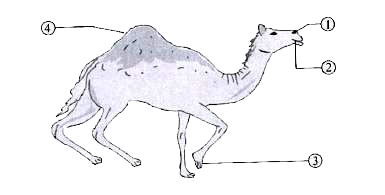
a. Stored fat can be respired to release water
b. Enclosed in membrane to limit evaporation
c. Large area makes movement more efficient
d. Can be closed to prevent entry of sand
A
a-3 b-2 c-4 d-1
B
a-4 b-1 c-3 d-1
C
a-1 b-2 c-3 d-4
D
a-2 b-4 c-1 d-3
Video Solution
Text Solution
The correct Answer is:B
In the given figure (1) is nostril, (2) is mouth, (3) is feet and (4) is hump. Hump (4) of camel stores food in the form of fat that can be respired to release water. Hence, camel can survive without eating for a long time. Nostrils (1) of camel are slit like and have flaps which close to limit evaporation and can be closed to prevent the entry of dust during storm. Feet (3) of camel are webbed and twintoed and have large pads which help it to walk on hot and slippery sand. Mouth (2) of camel is leathery and tough for chewing thorny plants found in desert.
|
Topper's Solved these Questions
Similar Questions
Knowledge Check
Refer to the given figure.
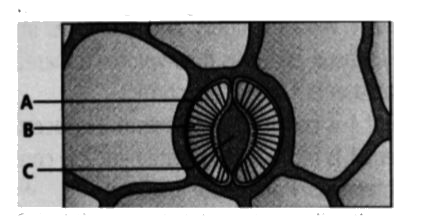
Select the correct statement regarding the labelled parts A-C.AThe inner wall of B towards C is thick and elasticBThe opening and closing of the stomata is due to change in the turgidity of BCThe opening of the stomata is aided due to the orientation of A in the cell walls of BDAll of theseRefer to the given figure
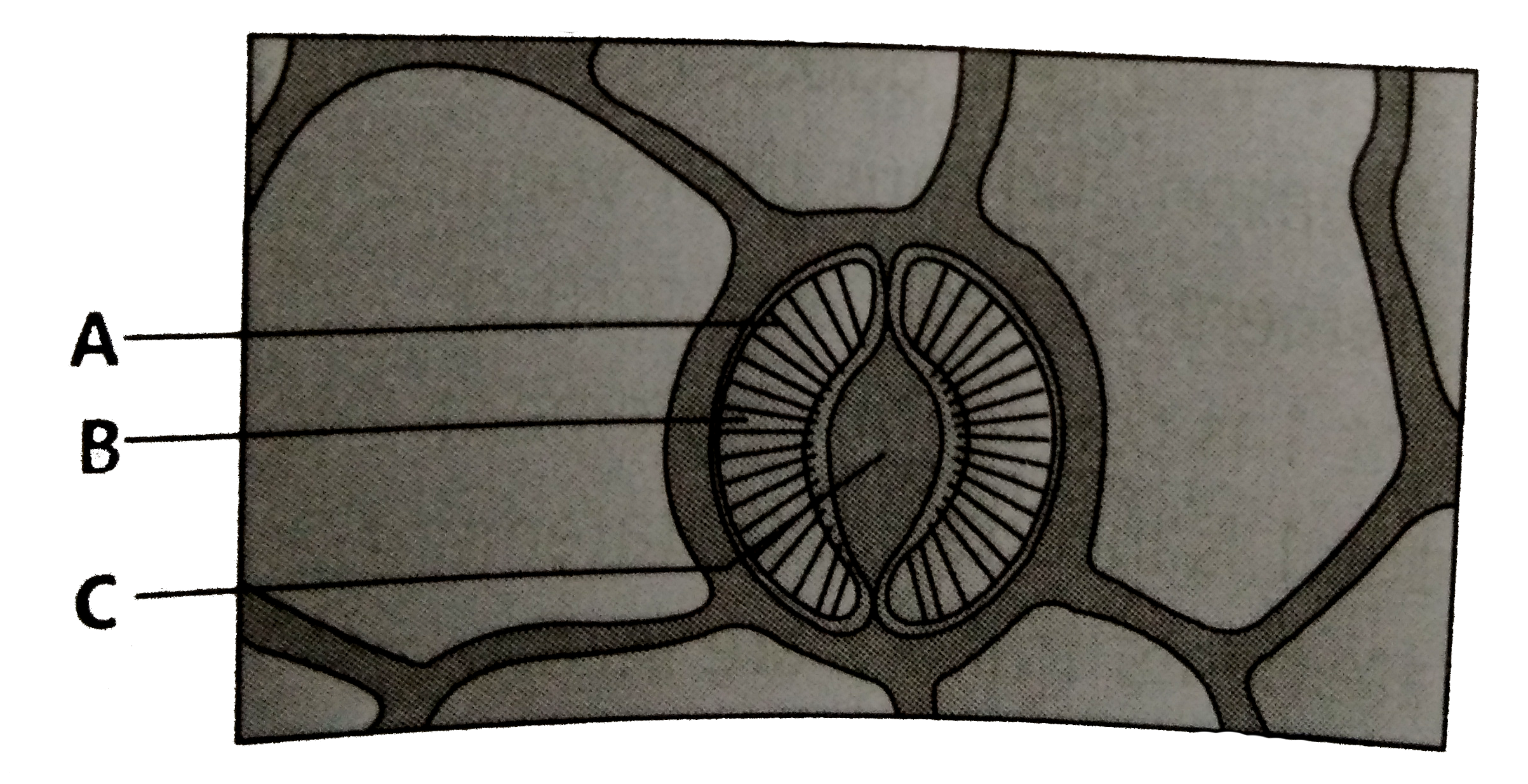
Select the correct statement regarding the labelled parts A−CAThe inner wall of B towards C is thick and elastic.BThe opening and closing of the stomata is due to change in the turgidity of BCThe opening of the stoma is aided due to the orientation of A in the cell walls of B.Dall of these.Identify the given figure and select the correct option for the parts labelled as A, B and C
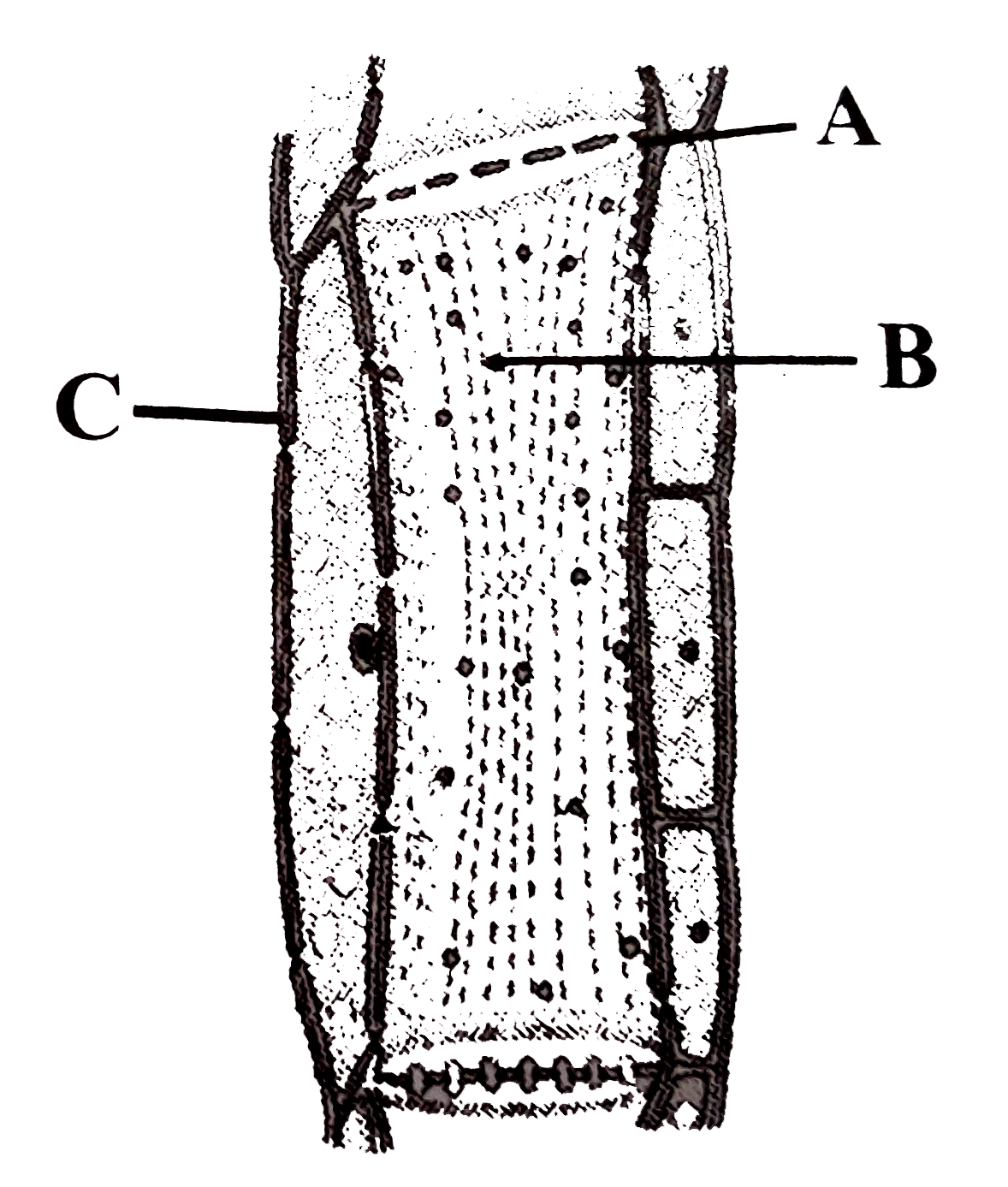 AC represents the cells which are replaced by albuminous cells in non-flowering plants such as gymnospermsBA represents phloem parenchyma, which is absent in most monocots.CB represents the cells which become dead on maturity.Dall of these
AC represents the cells which are replaced by albuminous cells in non-flowering plants such as gymnospermsBA represents phloem parenchyma, which is absent in most monocots.CB represents the cells which become dead on maturity.Dall of these
Describe some flight adaptations of the birds.
View SolutionSome of the adaptations in animals are given below:
Which of these adaptations are:
for polar regions?
 .
.
View SolutionSome of the adaptations in animals are given below:
Which of these adaptations are:
for tropical rainforests?
 .
.
View SolutionMention one adaptation present in the following animals:
In camels to keep their bodies away from the heat of sand.
View SolutionIdentify the parts labelled as A,B,C and D in the given figure and select the correct option from the given codes.
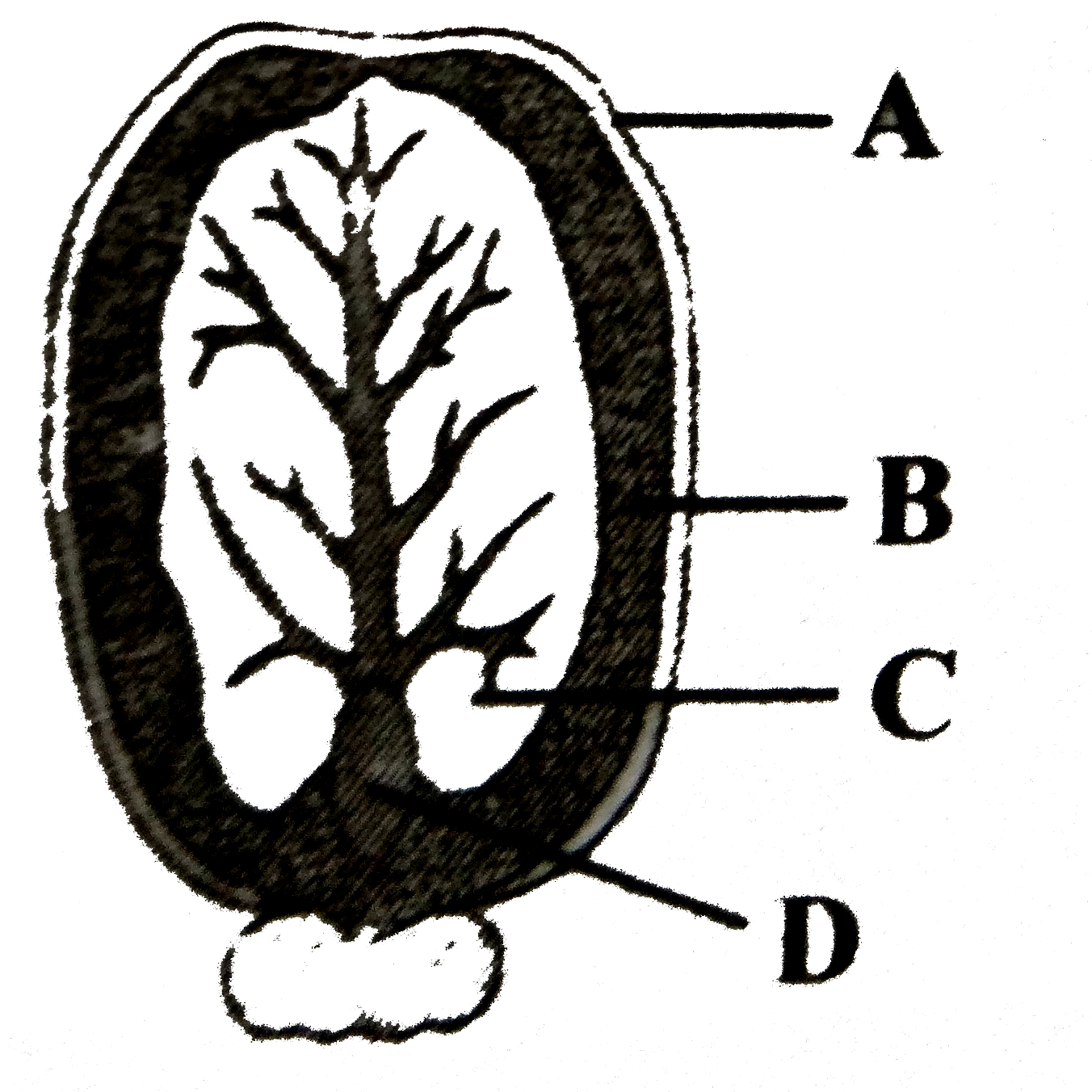
View Solution
